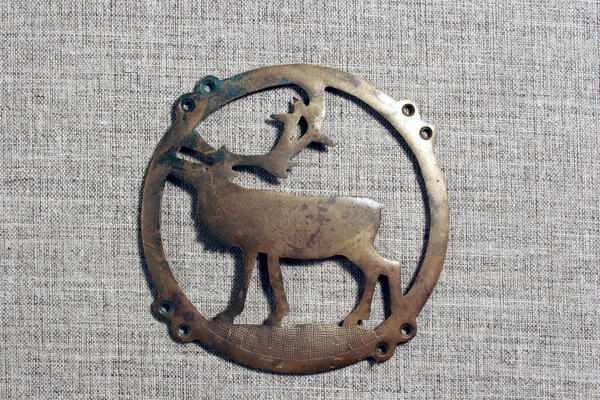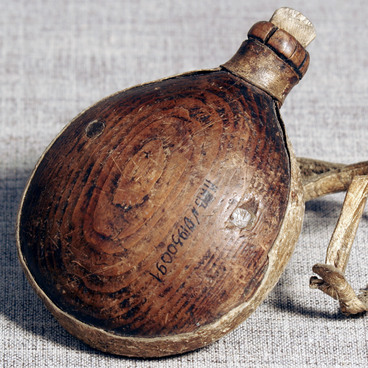Copper or brass moulded figures are an important decorative element in the Forest NEnets culture. Items like these are used to decorate traditional costumes and vehicles – the Northern sledges. Many historians note that the need for overlayed and hanging carved medallions, chains and bells was so high that it gave start to a whole new field of business. Both in Siberia and in the North of European part if Russia, copper moulding factories were established. They produced medallions and decorations for the indigenous Northern peoples with required design.
Despite the moulded medallions were produced in large numbers, they still cost a lot. They were traded for fur animal skins: sable, squirrel, marten or fox. The buyers paid generously as besides their decorative function, chains, medallions and bells also protected from evil spirits. According to beliefs, the jingle of metal protects the owner of the jewels from hostile forces. These single decorations have lived up to our days, having been passed through generations as a family heirloom.
Sledge decorations can only be found on a female or a festive bride sledge nowadays. The front upper bars are wrapped with colorful strips of cloth or rovduga, reindeer suede. The middle of a wall is decorated with a copper medallion with a cut-through pattern. The motif of the image is a family mark and it can be a running reindeer, geometrical ornament or a pictogram.
The female sledge decoration from Gubkinsky Museum of the Development of the North exposition is dated from the 19th century. Yenasyata Pyak, a Rychi-Yakha camp resident, passed it to the collection. The medallion is made of red copper, it is round, enclosing a silhouette of a reindeer with its head set high and crowned with branchy antlers. The reindeer legs stand on the ground. There are four pairs of symmetrical holes to fasten the medallion firmly to a sledge.
Despite the moulded medallions were produced in large numbers, they still cost a lot. They were traded for fur animal skins: sable, squirrel, marten or fox. The buyers paid generously as besides their decorative function, chains, medallions and bells also protected from evil spirits. According to beliefs, the jingle of metal protects the owner of the jewels from hostile forces. These single decorations have lived up to our days, having been passed through generations as a family heirloom.
Sledge decorations can only be found on a female or a festive bride sledge nowadays. The front upper bars are wrapped with colorful strips of cloth or rovduga, reindeer suede. The middle of a wall is decorated with a copper medallion with a cut-through pattern. The motif of the image is a family mark and it can be a running reindeer, geometrical ornament or a pictogram.
The female sledge decoration from Gubkinsky Museum of the Development of the North exposition is dated from the 19th century. Yenasyata Pyak, a Rychi-Yakha camp resident, passed it to the collection. The medallion is made of red copper, it is round, enclosing a silhouette of a reindeer with its head set high and crowned with branchy antlers. The reindeer legs stand on the ground. There are four pairs of symmetrical holes to fasten the medallion firmly to a sledge.



